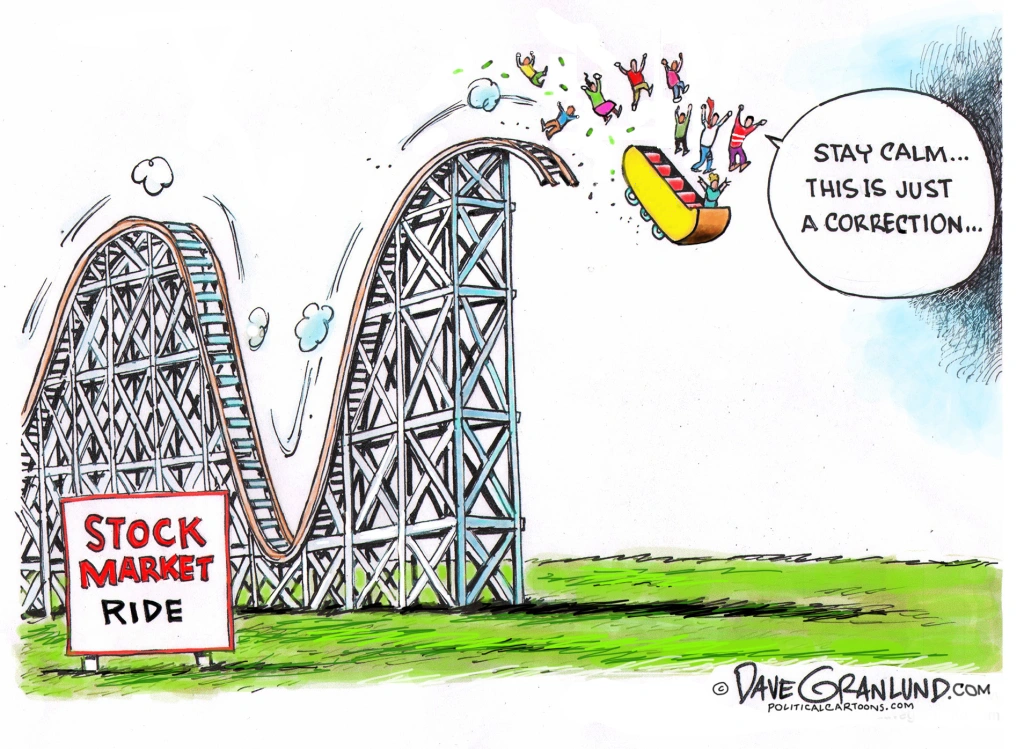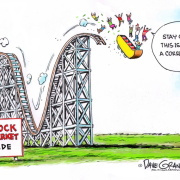Traders’ Attention Spans Get Shorter – 0DTE Options

Kerr Financial Group
Kildare Asset Mgt.
Jeffrey J. Kerr, CFA
Newsletter
May 15, 2023 – DJIA = 33,300 – S&P 500 = 4,124 – Nasdaq = 12,284
“Traders’ Attention Spans Get Shorter – 0DTE Options”
There are many days where the financial markets seem to be light-years apart from economic reality. We have all scratched our heads on days when stocks rally after a terrible news report. Similarly, an upbeat report hits the wire and there is widespread turmoil across the markets. While this has been a common occurrence over the years, it has become more common because of new derivative and option trading strategies.
Daily options on the SPY and QQQ ETFs began trading in the second half of 2022 and have quickly grown to have a large role in the stock market. Before exploring this trading strategy, let’s provide some definitions. Put and call options can be a little confusing but basically buying a call option is bullish while buying a put option is bearish.
A call option offers the right but not obligation to buy an underlying security at a specific price any time before the call’s expiration. A put option is the right but not obligation to sell the underlying security at a specific price before the put’s expiration.
Here is a specific example using Apple (symbol = AAPL). The AAPL options expire every week. Looking at a call option that expires on June 16 with a strike price (the exercise price) of $180 per share. This means that the owner of the call option can buy Apple at $180 any time before June 16.
Obviously when Apple’s share price is trading around the current level of $172, the owner of the call will not exercise (buy at $180). But if Apple trades above $180 before June 16, the call owner can buy AAPL at $180.
Turning to the put side, the buyer of a $165 AAPL put option with the same expiration date (June 16th) provides the right to sell AAPL shares at $165 before Jun 16. It wouldn’t make sense if Apple is trading in the $170’s, but if AAPL has fallen to the low $160’s, then put holders will gladly sell Apple shares at the higher price ($165).
To complicate the situation further, the price of these options trade and move up and down according to the stock price relative to the exercise price and the amount of time left before expiration.
With this Introduction, we move the focus to the recent development of daily expiring options. While many large stocks and the major indexes began offering options that expired each week, the SPY and QQQ started trading options in 2022 that expire every day. The SPY and QQQ are ETFs that mirror the S&P 500 and Nasdaq 100 indexes, and these are the securities on which the daily options trade.
These daily options are referred to as “0DTE” which stands for Zero Days to Expiration. In other words, these options expire at the end of the current trading day. The pricing of these options is entirely based on the S&P 500 and Nasdaq 100’s intraday price movements. Obviously, given the limited shelf life, this is for nimble traders who can react and adjust quickly.
The growth of 0DTE trading has been massive and led to some unexpected market influences. From a high-level view, when 0DTE options are bought (a bullish strategy), the dealer who sells these options now has added risk. The dealer had essentially sold short the options which means they are at risk of rising prices (they will lose money if stock rally).
Logically, dealers hedge their risk from the selling of call options by buying the underlying stocks of the index or they buy futures options on the index. This buying of stocks and futures pushes prices higher which then encourages more 0DTE call buying which forces more stock and futures buying. This can easily turn into a circular exercise which can move stock prices regardless of the news flow.
There is evidence that this was a big part of the stock market’s trading in the 1st quarter of 2023. The S&P 500 was up over 7% in the first quarter and the Nasdaq Composite rose almost 17%. This happened within an environment where banks failed, inflation remained high, the Federal Reserve raised interest rates, and the economic data weakened.
0DTE trading is being used as a short-term trading tactic and has very little correlation to the fundamental economic data. Traders, who are undoubtedly aware of the problems that are challenging the economy, believe they can rapidly adapt their positions to a changing stock market through this strategy.
The trading of 0DTE options has changed the way the stock markets move in the short term. To be sure, the circular machinations have helped stock prices in 2023. However, this can work in reverse if stock prices begin to drop. It could cause a rapid and steep drop if put option buying starts to outweigh the call buying. Dealers would have to hedge against declining prices and a dive could accelerate.
This is a complicated subject which can be confusing. Please feel free to call or email me and I’ll try to answer and explain further. One of the main conclusions from the growth of 0DTE is that underlying risks get masked in the short term. Ignoring risks doesn’t mean that they are reduced or eliminated. In fact, it could result in greater risks as financial asset prices move further away from reality. This could be the story of 2023.




Leave a Reply
Want to join the discussion?Feel free to contribute!